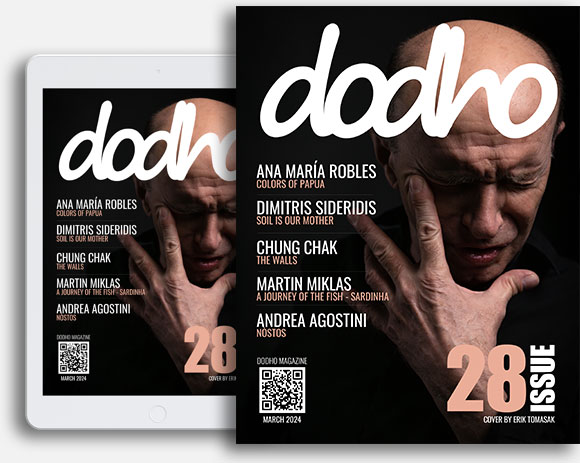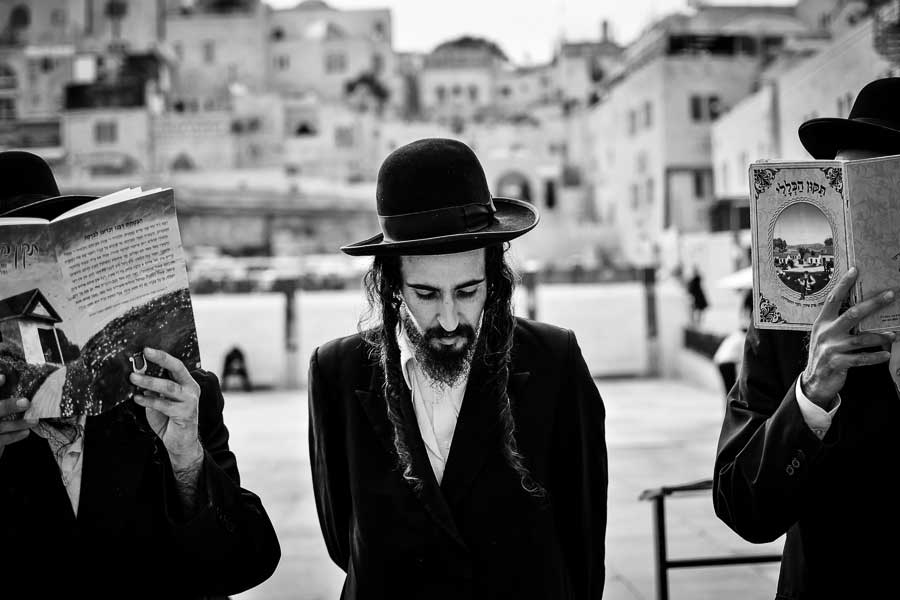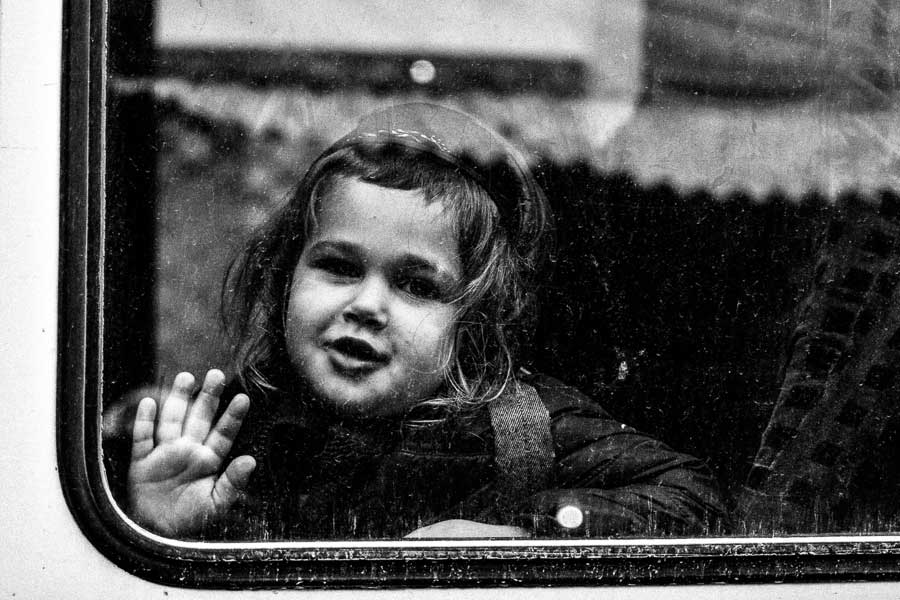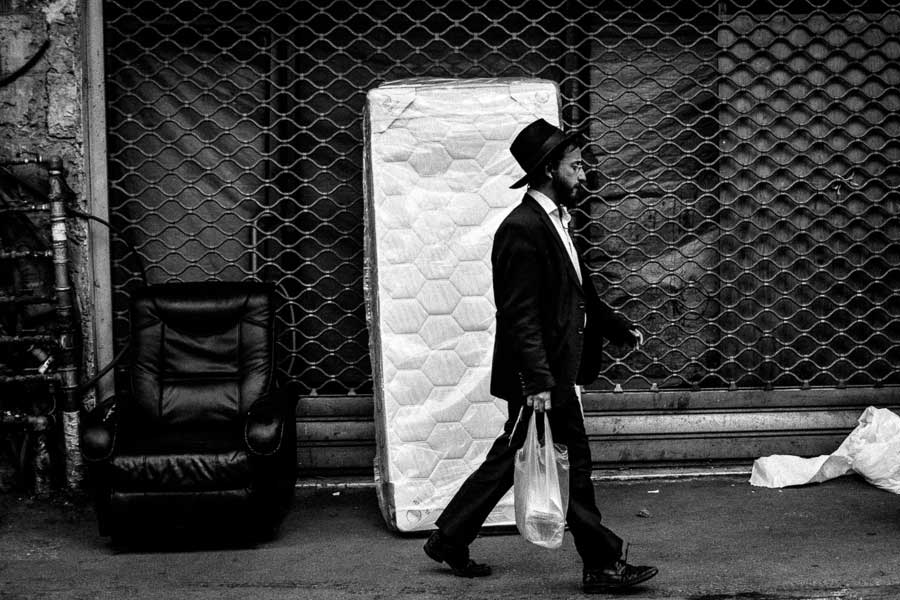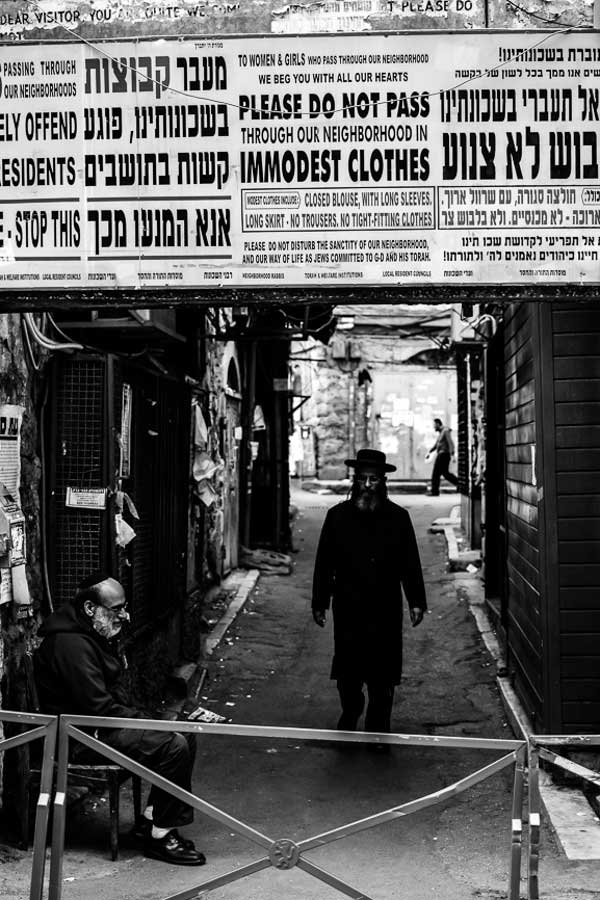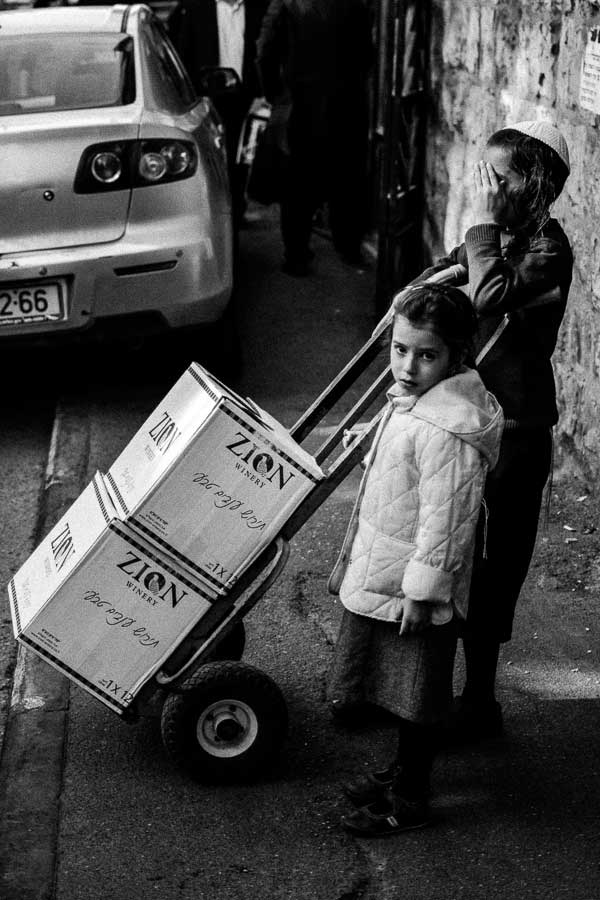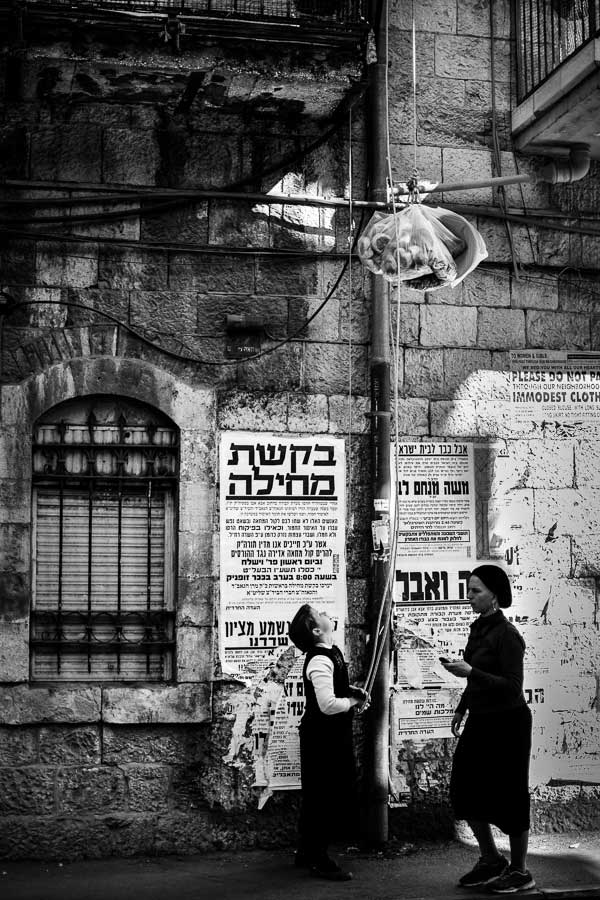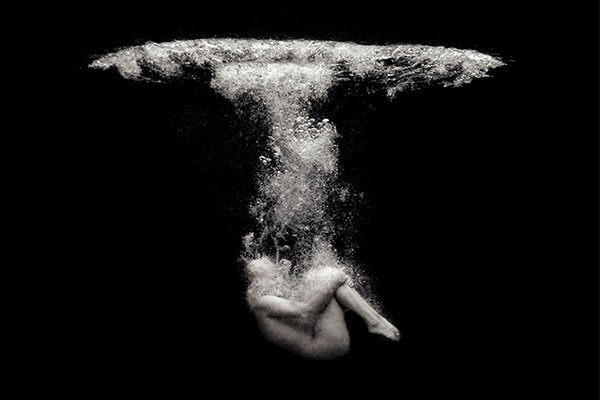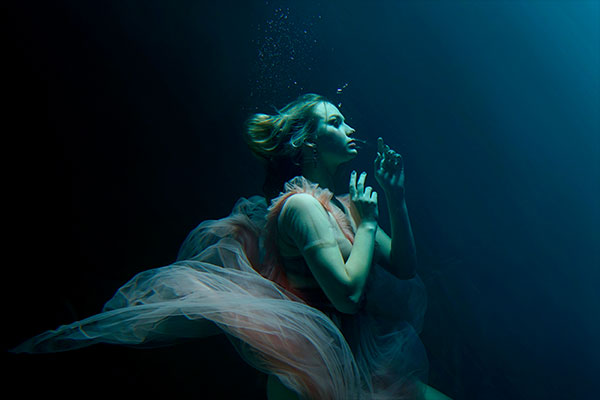Three days of photographing the Old City in Jerusalem leave you amazed at the mixture of religions and cultures.
But increasingly, I wanted to see between the walls, the ìreal Jerusalemî, without the tourists and the myriad peddlers. When I talk about ìthe real Jerusalemî I mean the tradition, so strong that it defies time.
Welcome to the ultra-Orthodox Jewish quarter of Me’a Še’arim, the Charedi neighbourhood, near the Old City, where the most conservative members of the Haredim of Orthodox Judaism live. The word is derived from the word charada, fear, tremor, awe. It is also occasionally used for ìgodlyî. The fifth and largest neighborhood outside the walls of the Old City inspires immediate respect. The dusty streets, the shops, the buildings make it seem as if you had stepped back a hundred years.
Haredi families have an average of six or more children. Ten in a family is not unusual. What impresses you immediately at first glance is the most recognisable character of the Haredim. The men are dressed mostly in black, a classic black suit and white shirt without a tie or bekiö (black cloak of the holiday). On Shabbat, which runs Saturday but begins on Friday afternoon, men are in a different color, white or gold. And, of course, we cannot forget the hats.
Rules of dress for women are not strict, but clothing must cover at least the knees. The sleeves must extend over the elbows. But do not expect variety, colour or perhaps some extravagance, most women wear dark colors which do not attract attention. Married women must cover their hair with a scarf. In some groups they cut their hair or shave the head and wear a wig in public. It is not strange to see veiled women and girls.
During my time in Me’a Še’arim I saw no one who took photographs or indeed any foreigner. At this point, it takes courage just to pull out the camera. Point and pull the trigger? The basic rule is no photographs without permission.
I initially took a few photos of the empty street, but there was no direct contact. People avoided my company. I spotted a few places whose vibrant atmosphere I wanted to capture. But where a little while ago were many locals, the place emptied out as I made my way. One day in the neighbourhood children welcomed me by spitting when they saw that I took pictures. They were obviously having fun shouting at me. But they were too far away and I wanted close-ups, not the zoom lens. I was starting to feel discouraged.
During my entire time in Me’a Še’arim I didnít meet with a single sympathetic reaction among the women. Compared to Europeans, these women have a very difficult life. They are completely subordinate to men, have many rules with which they must comply and which are invented specifically for them.
In a few days the situation started to turn and I managed to photograph places and people without major problems. I still got mistrustful glances, but I had become a familiar sight. Negative feelings gradually turned positive. On my last night I met a group of college students. I was at the door of their dormitory, they invited me in, offered snacks, cigarettes and we talked.
It was a very pleasant experience. I found the first positive feelings, Me’a Še’arim also shows friendly face, and I reminded of the armistice that Jews use. Compare with the cactus “On top of prickly sweet inside.” During my working at ultra-orthodox locations I met a lot of men who came from all over the world. “Israel is the home of all Jews. I am at home here”, they say without difference. With more time which I spent in the Me’a Še’arim I liked it more and more. I was going back and I’m sorry that I had to go back so soon, when I am one step closer to the local. My desire to photograph this unique place, unusual people is greater than before entry into their world. [Official Website]


